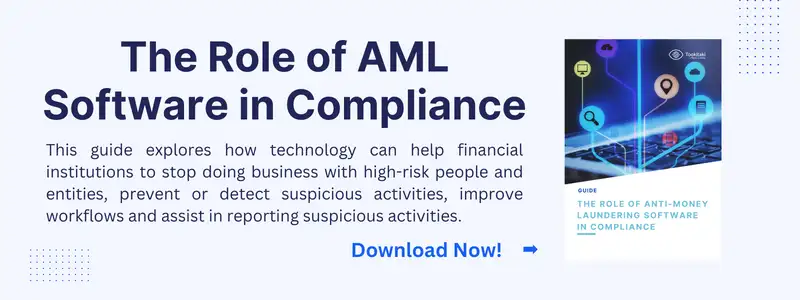Effective Case Management in AML: Streamlining AML Investigations
Introduction
In the ever-evolving landscape of financial crime, effective Anti-Money Laundering (AML) efforts are crucial for financial institutions to protect themselves and the global financial system. AML case management plays a pivotal role in managing and streamlining investigations related to suspicious activities and potential money laundering.
In this article, we will delve into the world of AML case management, its significance in the fight against financial crime, and explore examples, templates, and AML compliance solutions that can enhance the effectiveness of AML operations. Join us as we uncover the key components and best practices of AML case management.
Key Takeaways
- AML case management is essential for financial institutions to detect, investigate, and prevent money laundering activities.
- Key components of AML case management include identification and assessment of suspicious activities, case assignment and prioritization, investigation and data gathering, collaboration and communication, and documentation and reporting.
- AML case management examples include investigating suspicious transactions, analyzing customer behaviour patterns, and conducting enhanced due diligence.
- AML case management templates provide standardized frameworks for documenting and managing cases.
- AML compliance solutions, such as technology platforms, automated monitoring systems, and risk assessment tools, enhance the effectiveness of AML case management.
- Challenges in AML case management include data quality and integration, staff training, and continuous process improvement.
Introduction to AML Case Management
AML case management refers to the systematic process of managing and investigating suspicious activities and potential instances of money laundering within a financial institution. It involves identifying, assessing, and documenting cases, as well as coordinating investigations and reporting to regulatory authorities.
Importance of AML Case Management
Effective AML case management is vital for financial institutions to ensure compliance with regulations, detect and prevent money laundering, and mitigate the risks associated with financial crime. It provides a structured approach to managing investigations, facilitating collaboration, and maintaining proper documentation.
Key Components of AML Case Management
a. Identification and Assessment of Suspicious Activities: A robust AML case management system enables the identification and assessment of suspicious activities through transaction monitoring and customer due diligence.
b. Case Assignment and Prioritization: Cases need to be assigned to investigators based on their expertise and workload. Prioritization ensures that high-risk cases are given appropriate attention and resources.
c. Investigation and Data Gathering: AML case management involves conducting thorough investigations, gathering evidence and data, and analyzing transaction patterns to identify potential money laundering activities.
d. Collaboration and Communication: Effective communication and collaboration among different departments within the financial institution, as well as with external stakeholders such as law enforcement agencies, are essential for successful AML case management.
e. Documentation and Reporting: AML case management requires accurate and comprehensive documentation of investigations, including supporting evidence and analysis. This information is used to generate reports for regulatory reporting and compliance purposes.
AML Case Management Examples
Examples of AML case management include investigating suspicious transactions, analyzing customer behavior patterns, conducting enhanced due diligence on high-risk customers, and tracking financial flows to identify potential money laundering activities.
AML Case Management Templates
AML case management templates provide a standardized framework for documenting and managing AML cases. These templates often include fields for case details, evidence collection, investigation updates, and reporting.
AML Compliance Solutions for Case Management
a. Technology Solutions: AML compliance software and platforms offer advanced case management functionalities, including automated alerts, case tracking, data analysis, and reporting capabilities.
b. Automated Monitoring Systems: Integrating automated monitoring systems into the AML case management process enables real-time monitoring of transactions and the detection of suspicious activities based on predefined rules and algorithms.
c. Risk Assessment Tools: Risk assessment tools help in identifying high-risk customers and transactions, allowing financial institutions to allocate resources effectively and prioritize investigations.
Challenges and Best Practices in AML Case Management
a. Data Quality and Integration: Ensuring the accuracy and integrity of data is crucial for effective AML case management. Integration of data from various sources and systems can present challenges but is essential for comprehensive investigations.
b. Staff Training and Expertise: Continuous training and development programs are necessary to equip AML investigators with the knowledge and skills required to effectively manage cases and stay updated with the latest AML trends and techniques.
c. Continuous Process Improvement: Regular evaluation and improvement of AML case management processes help identify bottlenecks, streamline operations, and enhance the efficiency of investigations.
Conclusion
AML case management is a critical aspect of the fight against financial crime, enabling financial institutions to effectively detect, investigate, and prevent money laundering activities. By implementing robust case management processes, leveraging technology solutions, and fostering collaboration, financial institutions can enhance their AML operations and ensure compliance with regulatory requirements. Effective AML case management not only protects institutions from financial and reputational risks but also contributes to the integrity and stability of the global financial system.
Anti-Financial Crime Compliance with Tookitaki?
Related Terms
Recent Posts

.png?width=250&height=104&name=PNG%20-%20Montserrat%20LOGO%20-%20a%20Thunes%20company%20(White).png)
-1.png?width=200&height=83&name=PNG%20-%20Montserrat%20LOGO%20-%20a%20Thunes%20company%20(White)-1.png)





